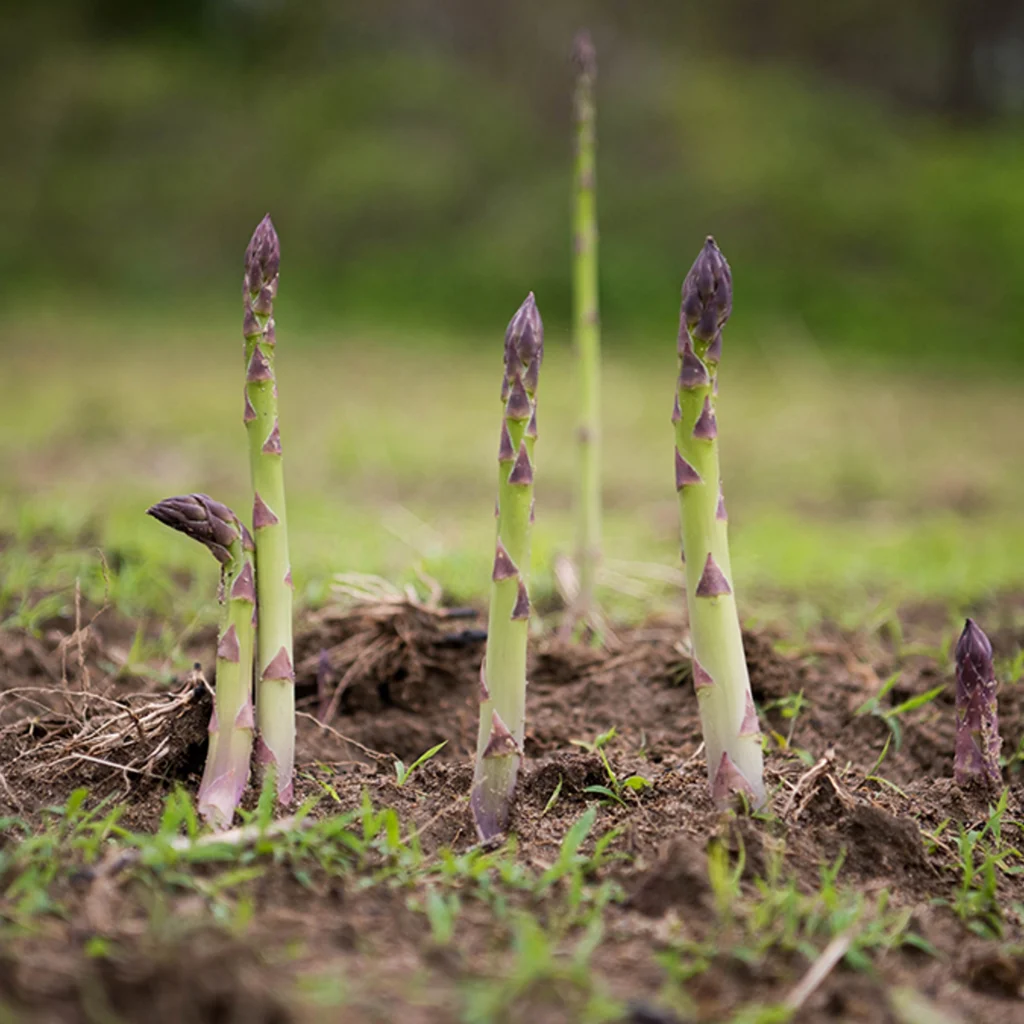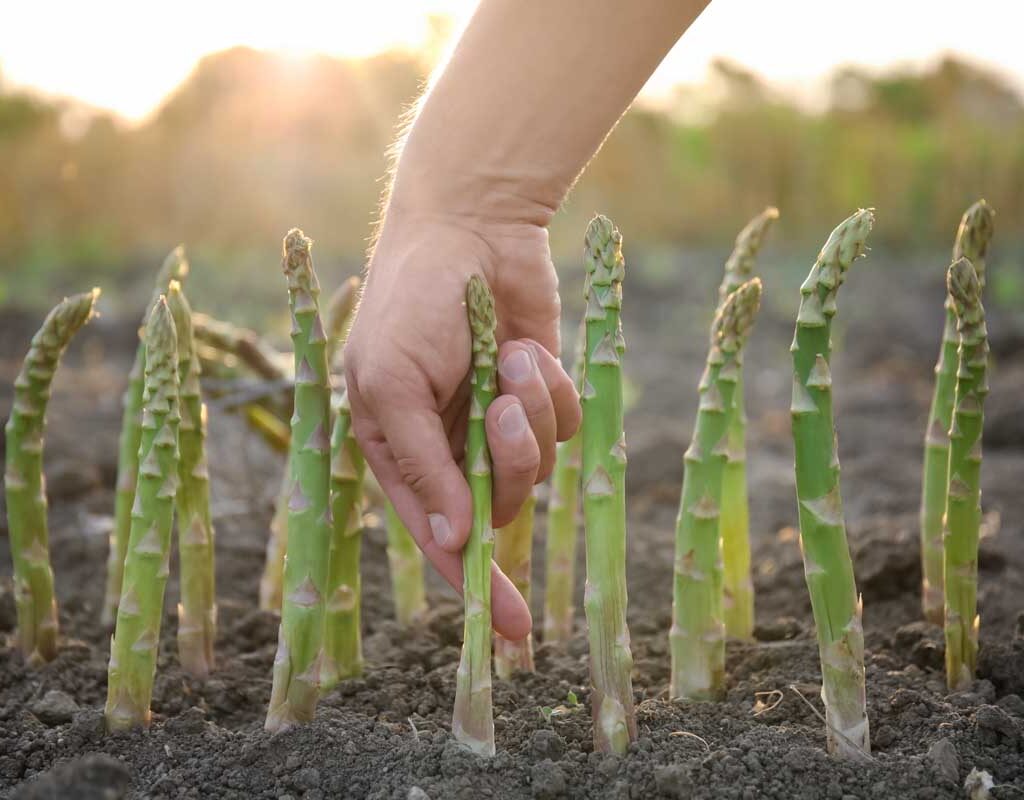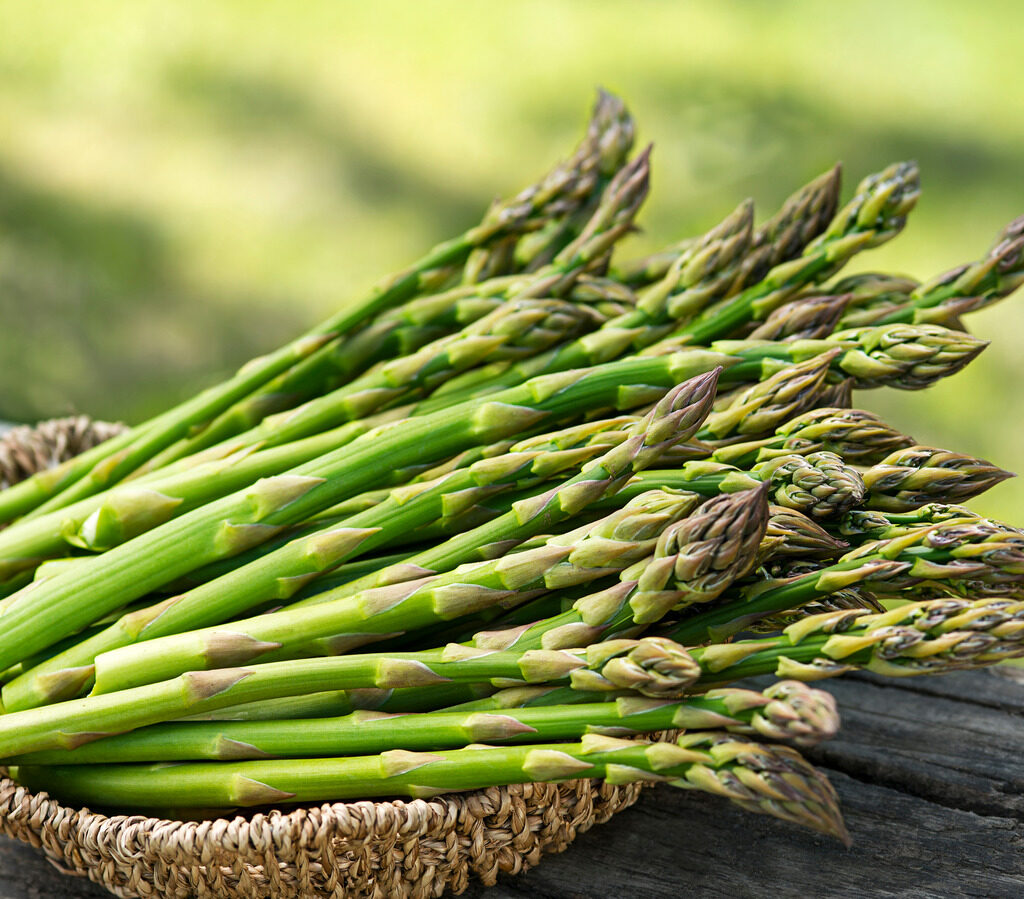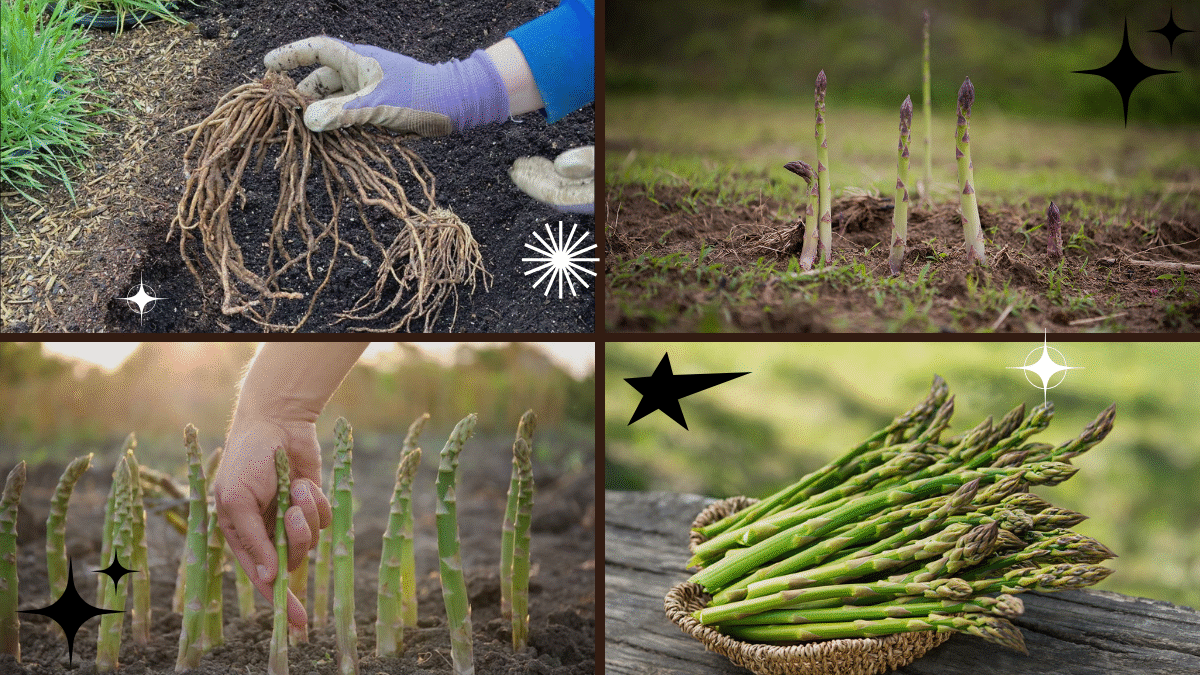If you’re a fan of fresh, flavorful vegetables straight from the garden, asparagus deserves a prime spot in your backyard. This perennial vegetable is not only a gourmet favorite but also one of the earliest and most rewarding crops to emerge in spring. With its tender green spears and rich, earthy taste, homegrown asparagus far surpasses anything you’ll find in the grocery store.
Even better? Once established, an asparagus bed can produce for 15 to 20 years — making it a long-lasting, low-maintenance addition to your edible garden. In this comprehensive guide, we’ll show you exactly how to plant asparagus crowns and keep them thriving for seasons of delicious harvests.

Why Grow Asparagus in Your Garden?
Asparagus is one of those vegetables that truly shines when grown at home. Here’s why:
- Superior flavor and tenderness compared to store-bought spears.
- Perennial growth — plant once and harvest for decades.
- Nutrient-rich: Loaded with fiber, folate, vitamins A, C, E, and K.
- Beautiful, fern-like foliage in summer, adding ornamental value.
- Early spring harvest when little else is ready in the garden.

What Are Asparagus Crowns?
Asparagus can be grown from seed, but most gardeners prefer to start with crowns — which are clusters of 1-year-old roots. These crowns give you a one-year head start and reduce the long waiting period before you can begin harvesting.
When planted in early spring, crowns establish faster and are hardier against pests, diseases, and environmental stress.

Choosing the Right Asparagus Variety
There are several asparagus varieties to consider, depending on your climate and preferences:
Popular Varieties:
- Jersey Giant: High-yielding, disease-resistant, hardy.
- Mary Washington: Classic, heirloom variety with excellent flavor.
- Purple Passion: Beautiful purple spears with a sweet, nutty taste.
- Millennium: Cold-hardy, adaptable, and great for northern climates.
Pro Tip:
Choose all-male hybrids (like Jersey series) for larger yields, as male plants don’t produce energy-draining berries.

When and Where to Plant Asparagus Crowns
Best Time:
- Early spring, as soon as the soil is workable and daytime temps reach about 50°F (10°C).
Ideal Site:
- Full sun — at least 6–8 hours of direct sunlight daily.
- Well-draining, fertile soil rich in organic matter.
- Avoid areas where water pools or remains soggy after rain.
- Pick a permanent location — asparagus doesn’t like to be moved.
Soil pH should be slightly acidic to neutral (6.5–7.0) for optimal growth.
How to Prepare the Planting Site
Asparagus thrives in deeply worked, nutrient-rich soil. Here’s how to prep the bed:
- Choose a spacious area, as crowns spread over time.
- Clear weeds, grass, and debris thoroughly.
- Loosen soil to a depth of 12–18 inches using a garden fork or tiller.
- Work in well-rotted compost, aged manure, or organic matter.
- Add bone meal or a balanced fertilizer (10-10-10) to promote root development.
Consider building a raised bed if your soil is heavy clay or prone to waterlogging.
How to Plant Asparagus Crowns (Step-by-Step)
1. Dig Trenches
- Dig a trench 12–18 inches wide and 6–8 inches deep.
- Space trenches 3–4 feet apart to allow room for spreading.
2. Form a Ridge
- Create a small ridge or mound of soil down the center of the trench.
3. Position the Crowns
- Spread the roots of each crown out evenly over the ridge, like an octopus.
- Space crowns 12–18 inches apart.
4. Cover with Soil
- Cover crowns with 2–3 inches of soil, leaving the trench partially filled.
- As shoots grow, gradually fill in the trench with more soil until level with the ground.
Why fill gradually?
It allows spears to emerge more easily and protects delicate new growth.
Watering and Mulching
- Water thoroughly after planting and keep soil consistently moist (but not soggy).
- Apply a 2–3 inch layer of organic mulch (like straw or compost) to retain moisture, suppress weeds, and regulate soil temperature.
Fertilizing Asparagus Beds
Feed your asparagus regularly to encourage strong, healthy growth:
- In early spring, before spears emerge, apply a balanced organic fertilizer around the base of the plants.
- Add compost or aged manure annually to replenish nutrients.
- Avoid over-fertilizing, especially with nitrogen, as it encourages excessive fern growth over spear production.
Asparagus Care Tips for Year-Round Success
1. Weeding
Keep the bed weed-free, especially during the first year when crowns are establishing. Mulching helps minimize weeds.
2. Fern Growth
After harvest season, allow remaining spears to grow into tall, feathery ferns. These feed the crowns and prepare them for next season’s harvest.
3. Cut Back in Fall
Once the ferns turn yellow and die back in late fall, cut them down to ground level. Remove and discard the debris to prevent overwintering pests.
When to Harvest Asparagus
Patience pays off when growing asparagus. Here’s the typical harvest timeline:
- Year 1: Do not harvest. Let plants establish.
- Year 2: Light harvest for 1–2 weeks once spears reach 6–8 inches tall.
- Year 3 and beyond: Full harvest for 6–8 weeks each spring.
Pro Tip:
Snap or cut spears at ground level when they’re about 6–8 inches tall and before the tips start to open.
Common Pests and Problems
Asparagus is relatively trouble-free, but be aware of:
- Asparagus beetles: Hand-pick, use neem oil, or introduce ladybugs.
- Slugs and snails: Trap or hand-remove.
- Fungal diseases (like rust): Avoid overhead watering, maintain airflow, and clear dead foliage promptly.
Healthy soil and good cultural practices prevent most issues.
Companion Planting for Asparagus
Good neighbors for asparagus include:
- Tomatoes: Repel asparagus beetles.
- Basil and parsley: Help deter pests.
- Marigolds: Attract beneficial insects.
Avoid planting alliums (onions, garlic) near asparagus, as they can compete for nutrients.
Final Thoughts
Planting asparagus crowns is one of the most rewarding investments you can make in your garden. Though it requires a bit of patience at first, the long-lasting harvests of tender, gourmet-quality spears year after year make it well worth the effort.
With proper site preparation, consistent care, and a little seasonal attention, your asparagus bed will thrive for decades — providing you with early spring harvests, lush summer foliage, and the satisfaction of growing one of nature’s finest perennials right at home.
Ready to start your gourmet garden? Dig those trenches and plant your crowns today — your future self will thank you!





Leave A Comment